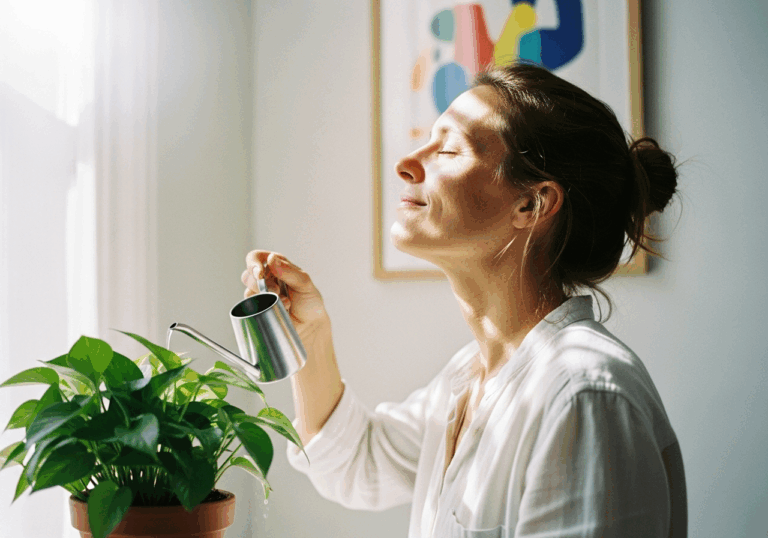Science-Backed Tips
Indoor Plants Reduce Stress and Enhance Mood
Viewing greenery can lower pulse rate by 6%.
📊 Did you know?
💡 Why It Matters
1️⃣
Lowering pulse rate by 6% can significantly reduce stress levels.
2️⃣
Improved relaxation can lead to better mental health outcomes.
3️⃣
Incorporating plants in indoor spaces may enhance overall quality of life.
✅ Try These Micro-Tips
🎯
Incorporate at least 2 indoor plants in your workspace.
🎯
Spend 10 minutes daily observing your plants to enhance relaxation.
🎯
Rotate plant types every few months for varied visual stimulation.
🎯
Consider using plants known for air purification to improve indoor air quality.
📚 The study
This reduction in heart rate is not just a number; it signifies a tangible drop in stress levels and an enhancement in relaxation.
Why is this important? Lowering one’s pulse rate can lead to significant improvements in mental health, fostering a sense of tranquility and well-being.
By incorporating greenery into our indoor environments, we can create spaces that not only beautify our surroundings but also promote better mental health outcomes.
Imagine transforming your home or office into a serene oasis filled with lush plants that actively contribute to your relaxation and stress relief.
The study highlights the profound impact that simple elements of nature can have on our overall quality of life, making a compelling case for the integration of plants into our daily environments.
So, whether it’s a small potted plant on your desk or a vibrant indoor garden, embracing foliage can be a powerful step towards achieving a more peaceful and balanced life.
❓ Frequently Asked Questions ❓
Learn more
How does indoor greenery affect pulse rate?
Exposure to indoor greenery can lower pulse rate by 6%. This reduction indicates a calming effect on the body, promoting relaxation and reducing stress levels.
What physiological responses were measured in the study?
The study measured participants’ pulse rates while they viewed foliage plants. The results showed a significant decrease in pulse rate, indicating enhanced relaxation.
Why is a lower pulse rate important for mental health?
A lower pulse rate is associated with reduced stress levels, which can lead to improved mental health outcomes. This physiological change can enhance overall well-being and mood.
How can I incorporate plants into my workspace?
Incorporate at least two indoor plants in your workspace to benefit from their calming effects. Spending time observing these plants can further enhance relaxation.
What types of plants are best for indoor spaces?
Consider using plants known for their air purification qualities, such as snake plants or peace lilies. These plants not only improve air quality but also contribute to a calming environment.
How often should I rotate my indoor plants?
Rotating plant types every few months can provide varied visual stimulation and keep your indoor space fresh. This practice can enhance your overall experience with indoor greenery.
How long should I spend observing my plants daily?
Spending just 10 minutes daily observing your plants can significantly enhance relaxation. This simple practice can help lower stress and improve your mood.
What is the connection between plants and the parasympathetic nervous system?
Indoor greenery activates the parasympathetic nervous system, which is responsible for calming the body. This activation leads to a decrease in pulse rate and promotes relaxation.
Can indoor plants improve overall quality of life?
Yes, incorporating plants into indoor spaces can enhance overall quality of life by reducing stress and improving mood. The calming effects of greenery contribute to a more pleasant living or working environment.
What are the long-term benefits of having plants indoors?
Long-term exposure to indoor plants can lead to sustained improvements in mental health and well-being. Regular interaction with greenery can foster a more relaxed and enjoyable atmosphere.





